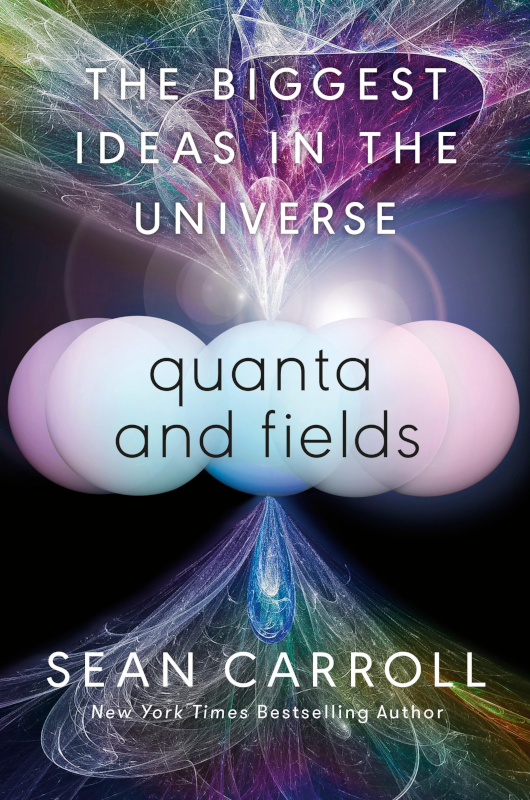What happens when you see something that just doesn’t make sense? Perhaps you rub your eyes and consider it an anomaly. But what if you see it in an experiment? Say, travelling electrons that make different patterns depending upon whether they were detected? Then, you might want to change your sense of reality. Now, if you can develop a theory for the observations, then maybe you can start a new field of science. It has happened. Quantum mechanics is the name given to this relatively new field and it’s the topic that Sean Carroll writes in his book, “The Biggest Ideas in the Universe – Quanta and Fields”. In his book, there’s much ado about particles, fields, groups and diagrams; all with the aim of enabling any reader to make sense of it.
Actually, fitting all of quantum mechanics within this small book is a very tall order. Though the field is barely a century old, some great minds have spent their lifetimes adding to it. The author’s been very selective as to what they’ve included and the depth to which they expanded an inclusion. They ‘skipped past all the complications and missteps and got right to the simplest and most direct way of understanding the final answer’. In consequence, this book has no derivations nor sample exercises. Rather, the book has a vast number of specialized terms, their implications to the field of quantum mechanics, and, often, the originator’s name. And, this book covers much.
So what’s in this book? Plenty. There’s the travelling wave function that accommodates both the detected and undetected probabilities of electrons passing through slits. The singular wave function of the universe that could entangle two or many particles. That decoherence is irreversible. Vertex diagrams imply that antiparticles travel backward in time. The Field Lagrangian now includes gradient energy. That ultraviolet catastrophe results when classical statistical mechanics assesses blackbody radiation. Spontaneous symmetry breaking occurs for bosons. And, the Core Theory tells us all we need to know of the laws of physics in everyday life. So, yes, this book is rich in material.
Who would enjoy reading this? Keep in mind that the book is technical, with contents specifically on quanta and physical fields. Having an interest in the study of quantum mechanics is a benefit. Given the book’s breadth of detail, the reading sometimes is encyclopedic in style (i.e. a term, its explanation, next term, and its explanation). Hence, it’s easy to put down and pick up later. It’s also great as a resource so as to get an overarching understanding of quanta and fields. Later, use it as a reference to fine-tune your investigation. Personally, I found it comparable to a phrase-book for translation. That is, if I were expecting to be exposed to an unknown language, then I might browse a phrase-book beforehand. Otherwise, both the phrase-book and this book would satisfy an interest but not be of much use in common, everyday activities.
While complex, the field of quantum mechanics results from some of our greatest thinkers. Including all their inspiration and results in one book is impressive. Sean Carroll’s book “The Biggest Ideas in the Universe – Quanta and Fields” does this. The wordage exudes enthusiasm. The details are clear and concise. In sum, making sense of quantum mechanics is a lot easier with this book at hand.
Note, this book is the second of a trilogy. You don’t need to read the first book (reviewed here) to understand this one. I am looking forward to the third book being published.


